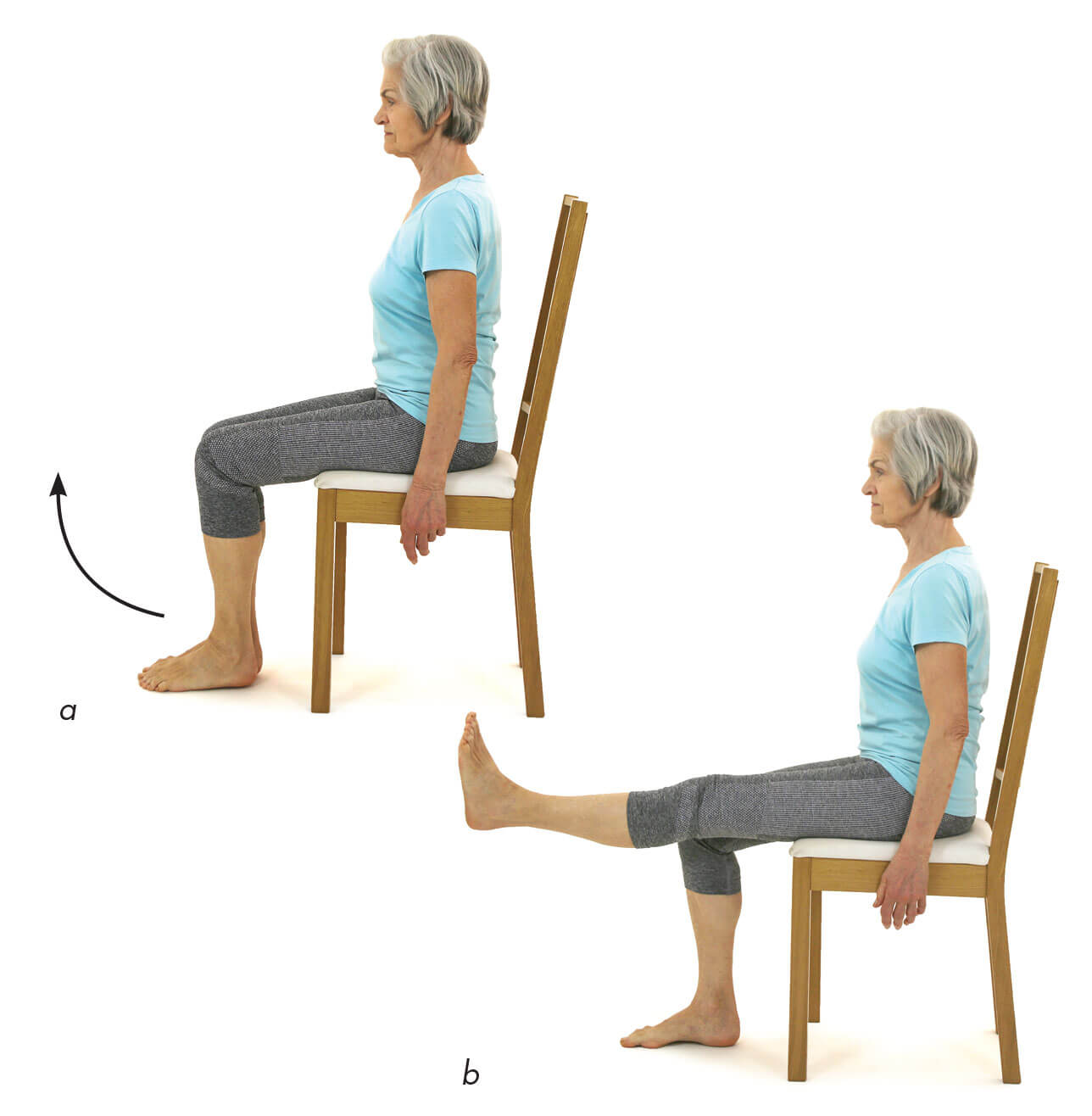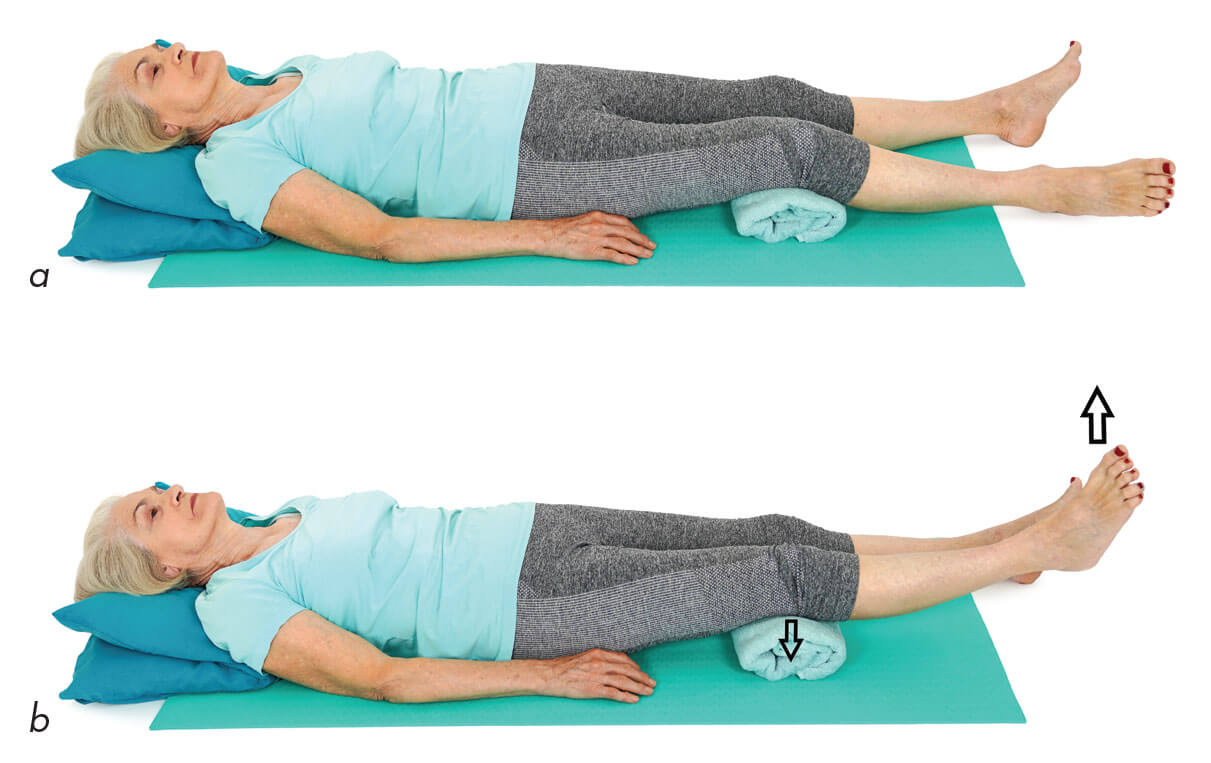Identifying Weakness in the Knee Extensors
This is an excerpt from Soft Tissue Therapy for the Lower Limb by Jane Johnson.
Knee extension occurs when the leg is straightened. One of the simplest tests of knee extension strength is the degree to which a client can straighten their leg when seated (figure 8.5). This requires no added resistance but can require effort because the leg is being lifted against gravity.

Courtesy of Tim Allardyce, Rehabmypatient.com.
An easy way to test knee extension strength by adding manual resistance is to start with your client in the prone position and with their knee flexed (figure 8.1); place your hand on the anterior of the ankle and ask the client to try to straighten the knee, bringing their ankle back down to the treatment couch.
TIP
In the early stages of recovery, it is rarely necessary to apply any resistance to the ankle when using the exercise shown in figure 8.5. However, in later recovery stages, you could add resistance by simply placing your hand on the anterior of the client’s ankle before they begin to straighten the knee.
Knee Extensor Strengthening
Knee extension exercises are important for regaining general knee strength but are also useful for overcoming cramping in the hamstrings. This is because the quadriceps (along with the hip flexors) are the antagonists to the hamstrings, and contraction of the anterior thigh muscles reduces tone in the posterior thigh. These exercises are important for people with osteoarthritis in the knee and after knee surgery. All of the weight-bearing exercises illustrated in this section are also suitable as part of an ankle strengthening programme – provided, of course, that there are no contraindications (such as an unhealed fracture).
When your goal is strengthening the knee extensors, a useful exercise to begin with is performed in the supine position with a small towel rolled up beneath the knee. The aim of the exercise is to straighten the leg (figure 8.6). This requires the knee extensors to work in a small range of movement. The value of this exercise is that it can be performed when a person cannot sit or stand, perhaps due to weakness in the knee extensors, and it is therefore especially helpful in the early stages of recovery from injury. With or without the towel, this exercise is also helpful when trying to overcome genu flexum, sometimes caused by contraction of the soft tissues at the back of the knee. Compare this to figure 8.5. Notice how, in that figure, the knee is moved through a greater range.

Courtesy of Tim Allardyce, Rehabmypatient.com.
If your client is able to flex their hip to approximately 90 degrees, they could practise knee extension in that position (figure 8.5). This requires lifting the foot through 90 degrees against gravity and can be a good way to progress knee extension exercises when a client is unable to bear weight. With the hip flexed and the knee extended, this exercise has the added advantage of helping to assist with lymphatic drainage, and this could help reduce swelling in the knee. The exercise does, however, require good hamstring flexibility.
If your client is able, resting in the prone position can also be used. In this position, the knee is straightened against the resistance of a rubber exercise band (figure 8.7). This requires your client to be able to hold an exercise band in one hand.

Courtesy of Tim Allardyce, Rehabmypatient.com.
SHOP

Get the latest insights with regular newsletters, plus periodic product information and special insider offers.
JOIN NOW


